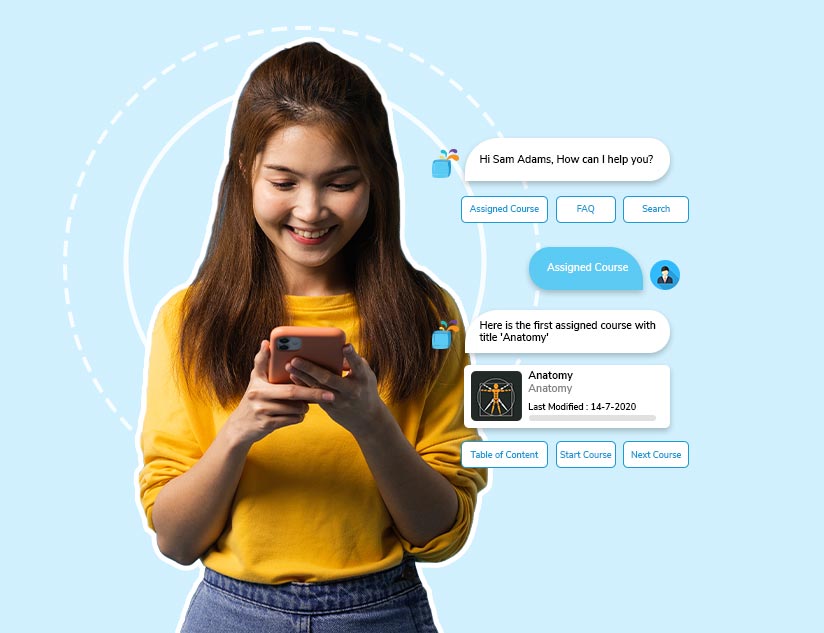Bringing Education to Home During COVID-19
May 18th, 2020
Sometimes fiction predicts reality. In the novel The End of October, which was published in early 2020, author Lawrence Wright paints a portrait eerily similar to the COVID-19 pandemic. It deals with a flu-like illness that starts from a single place and soon has the whole world in its grasp.
In the novel, institutions across the world struggle to deal with the outbreak, with the best solutions coming through the use of technology. It is almost prophetic of the current situation! Coronavirus has changed how the world functions in a matter of weeks. One of the most impacted areas is education. The pandemic has led to the closure of educational institutions in 192 countries. It is estimated that almost 92% of the total enrolled students in the world are affected due to this. The only recourse for education is to switch completely to the online mode.
The Problem with Traditional Online Learning
As it was in the case in The End of October, it is the technology that has come to rescue. The closure of schools has forced educators to focus on online learning. This generally involves video lessons over the internet from the teacher. But this method of online education often leaves students dissatisfied, if not confused.
Some of the problems with the traditional online learning mode are:
1. Uninteresting Content
In plain and simple terms, the traditional online system is a bit boring. It generally involves video lessons from the teacher and lots of text to go over. In short, students continue to be passive recipients, without the support of the physical presence of classmates, teachers and a conducive environment. So, a lot depends on self-motivation, which is difficult in such situations.
2. Technical Issues
Another problem many students face with traditional online learning is the lack of reliable internet connectivity. Around 163 million, or half of Americans do not have access to high-speed internet. So if the learning is purely based on video lessons from the teacher, this could prove to be a problem. Another issue is that many online lessons only work on certain devices or operating systems. This means that students might need to spend more money on lessons.
3. Accessibility is Overlooked
One of the main issues with online learning is that the needs of students with disabilities might be overlooked. Many online learning lessons often fail to provide the necessary resources, while also complying with the web accessibility guidelines such as WCAG 2.0
Features that Ensure Effective Education During the Lockdown
MagicBoxTM is an advanced digital learning platform that makes use of the latest educational technology to provide the best learning experience to students while easing processes for educational institutions and publishers. Some of the features of that make this platform the best means to offer learning at home during the coronavirus lockdown include:
1. Engaging Learning Experience
MagicBoxTM makes learning fun and immersive with the easy integration of interactive, multimedia, and gaming elements. Nobody wants to sit through a 45-minute lesson of looking at a screen while somebody else is speaking. Elements such as video, audio, infographics and games can help supplement the text lessons. Such learning has been found to improve cognitive development as well as the ability of students to feel competent while learning. There are even rewards in these lessons, such as badges and points. Such rewards have been found to promote the release of dopamine in learners. Dopamine, one of the feel-good hormones, promotes motivation for students to continue learning.
In addition, interactive and gaming elements take advantage of microlearning. Here, lessons are delivered in the form of small nuggets of information, which are generally 3 to 5 minutes long. This has been found to increase the amount of information that is retained as well as the application of the knowledge.
MagicBoxTM has been designed with continuous feedback loops, and provides detailed analytics on student progress and performance. It supports online instruction and virtual classroom sessions, in an easy-to-use, secure environment, that meets all learning technology standards and compliances.
2. Easy Access
With MagicBoxTM, lessons can be accessed on any device, be it a laptop, tablet or smartphone. There are no restrictions when it comes to operating systems either. The platform is compatible with Android, iOS and Windows devices. It also comes with an offline eReader, so that students can access learning whenever and wherever they want to. In addition, built-in semantics ensures easy search and discoverability of content.
3. Learning for All
MagicBoxTM goes to great lengths to ensure accessibility in education. The gaming and interactive elements have been found to be greatly useful for students with ADHD, dyslexia, and other learning difficulties.
For visually impaired students, text-to-speech features are available, while subtitles and captioning features ensure that students with hearing impairment can access learning too. Furthermore, the platform helps with compliance across industry standards, such as the latest WCAG guidelines.
The student portal complies to the WCAG. 2.0 AA standard and we’ve helped hundreds of school districts roll out content they can be sure meets this standard for all of their students.
These are only some of the features that make MagicBoxTM the best platform to deliver education during the current COVID-19 outbreak. To know more about how EdTech can propel you into the future of education, contact us today.














